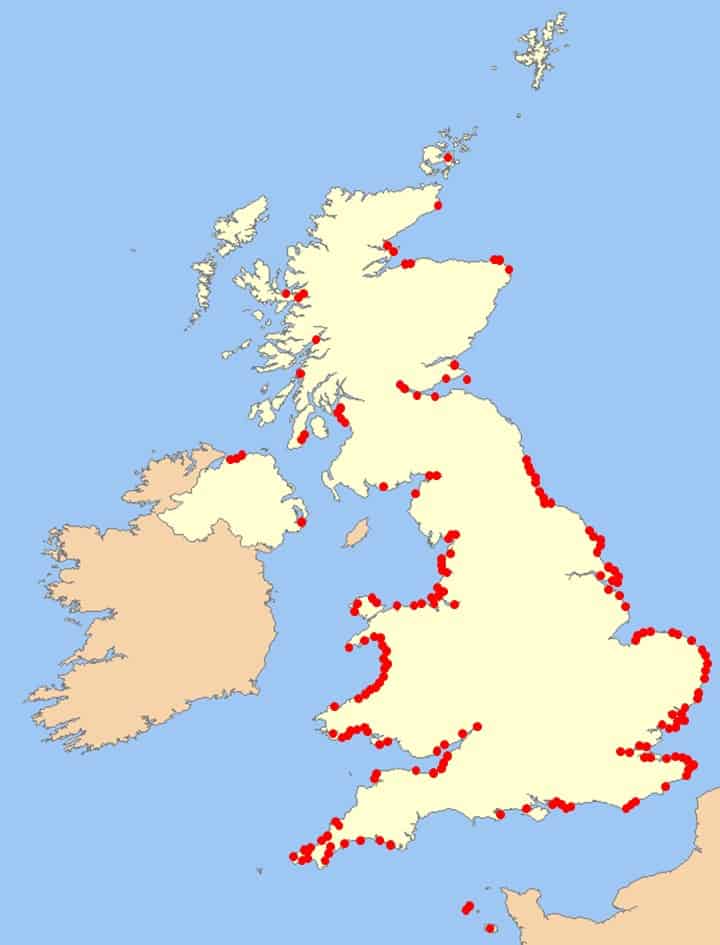
A coastal species, measuring up to 1.9 metres long, dark grey dorsally, white ventrally, with a blunt head with no beak, small rounded pectoral fins and a small central triangular dorsal fin. This species is found in the central and northern North Sea, off the west coast of Scotland, west coast of Wales and south-west coast of Ireland, in the southern Irish Sea and occasionally in the southernmost North Sea and English Channel. Harbour porpoises have a gestation period of 11 months, calves are born from May to August measuring 0.6 to 0.75m, and are dependent for 7 to 10 months. They are weaned when approximately 0.90 to 0.95m long. The species is found generally in small groups of a few individuals, and they feed mainly on shoaling fish e.g. herring, sprats and whiting.
This species is found all around the UK coast. It forages in coastal waters and is easily seen from the shore or a boat.
It enters estuaries frequently including the Thames, and can be seen as far inland as London. It is often see in small groups or singularly, but is a shy elusive animal to spot.

The harbour porpoise is one of the most common cetaceans BDMLR gets called to, mainly as they are one of our most abundant and widespread species. They are normally adept at navigating tidal areas and estuaries, so it is unusual for them to strand through navigational error, and more likely that there is a serious underlying health problem.
They are also a species attacked by bottlenose dolphins, which has led to occasional live strandings too. It is still unclear why this happens, but there are theories ranging from competition for space and food resources as well as misdirected sexual aggression. Common dolphins, striped dolphins and the calves of Risso’s dolphins and pilot whales are also known to have fallen victim to these attacks in the UK too.

A whale, dolphin or porpoise stranded on the beach is obviously not a usual phenomenon. These animals do not beach themselves under normal circumstances, and they will require assistance. Please DO NOT return them to the sea as they may need treatment and or a period of recovery before they are fit enough to swim strongly.
BDMLR RESCUE HOTLINE:
01825 765546 (24hr)
or
RSPCA hotline (England & Wales): 0300 1234 999
SSPCA hotline (Scotland): 03000 999 999
You will receive further advice over the phone, but important things you can do to help are:
If you find a dead cetacean
The Cetacean Strandings Investigation Programme (CSIP) collects a wide range of data on each stranding found on English and Welsh shores, whilst the Scottish Marine Animal Strandings Scheme (SMASS) does the same for Scotland. If you discover a dead animal, please contact the relevant hotline and give a description of the following where possible:
Digital images are extremely helpful to identify to species, as well as ascertaining whether the body may be suitable for post-mortem examination.
CSIP has produced a useful leaflet that can be downloaded by clicking here.
CSIP hotline (England and Wales): 0800 6520333.
SMASS hotline (Scotland): 07979245893.